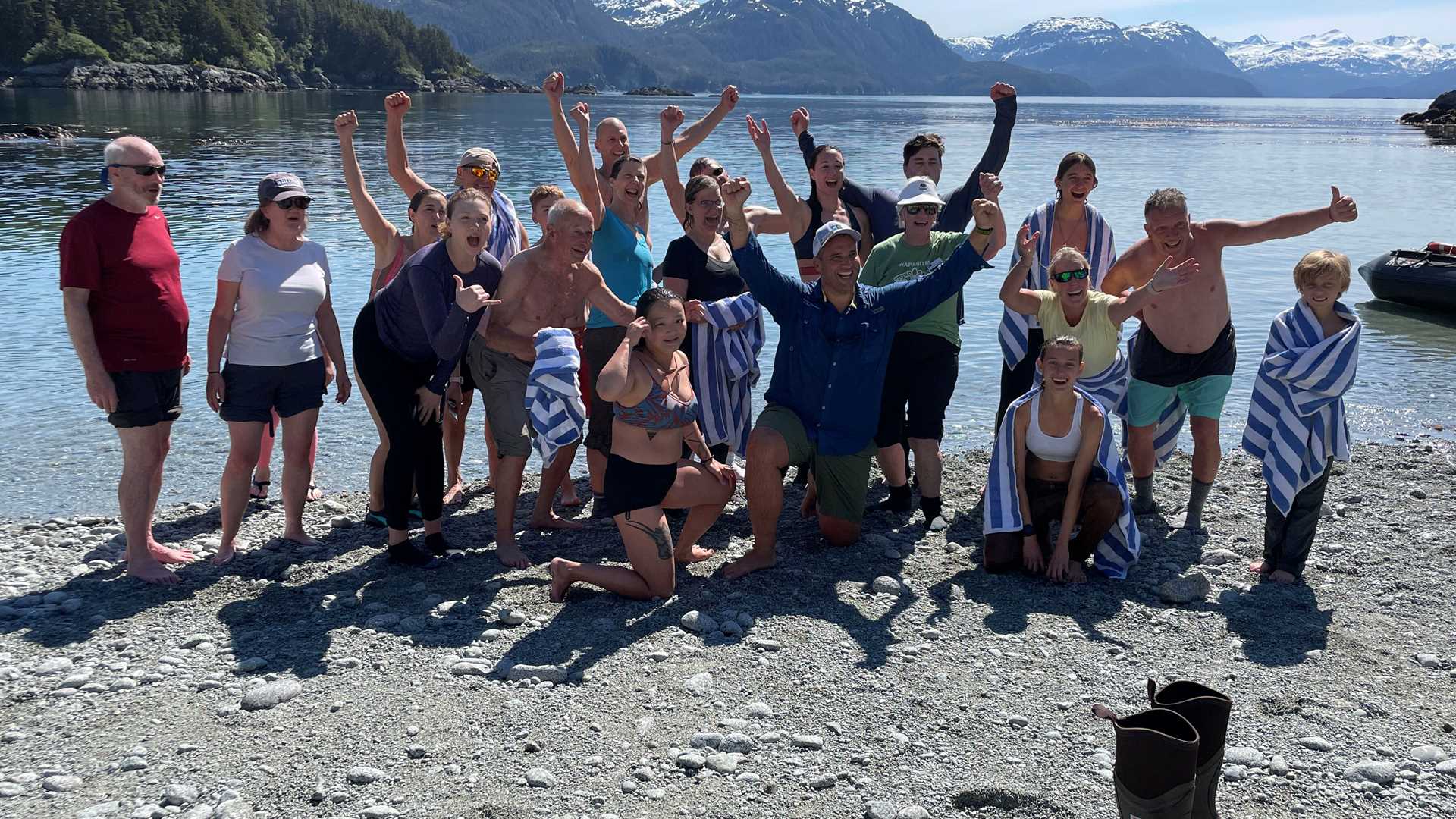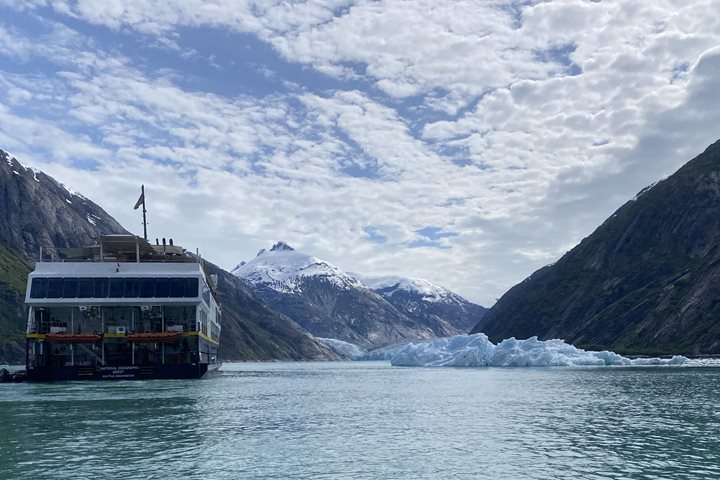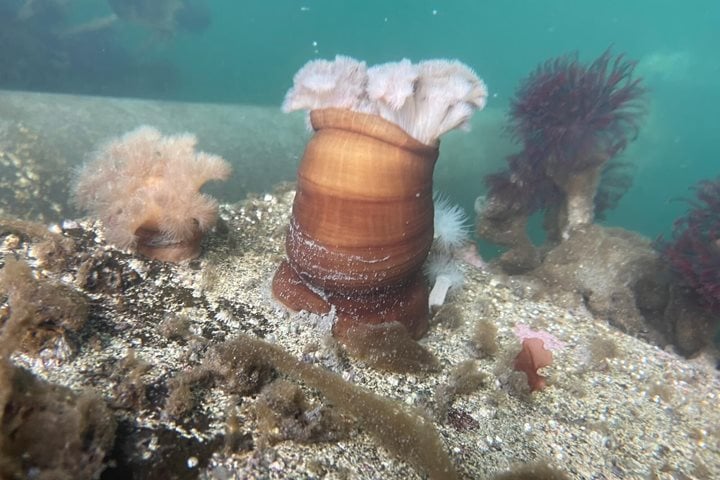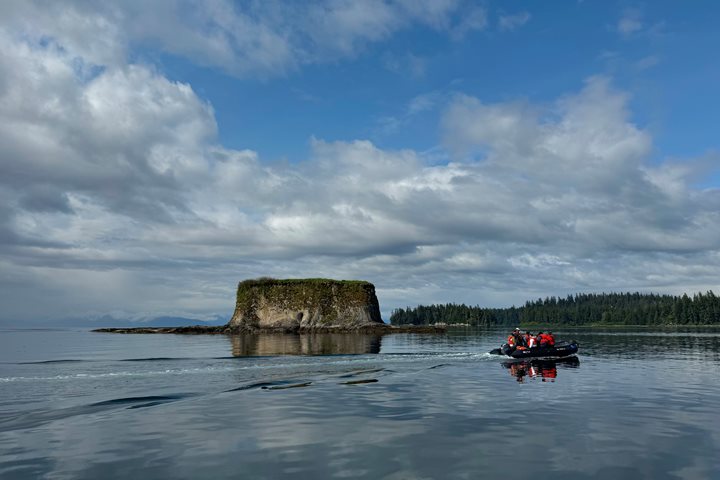As we sailed toward our island destinations this morning, calm water and an incredibly clear blue sky allowed us to see marine wildlife and the Fairweather range in the distance. Everyone chose their pace and followed their interests on a variety of hikes and exploratory walks on George Island. After hiking, a large number of people thought that it was great fun to run into the ocean from the pebbled beach.
After lunch, two rounds of Zodiac cruising allowed everyone to explore the Inian Islands. It was a great opportunity to see this area that has incredible upwelling and nutrients from all of the glacial activity in the area. People were thrilled to see, hear, and smell the Steller sea lions, sea otters, and eagles.







